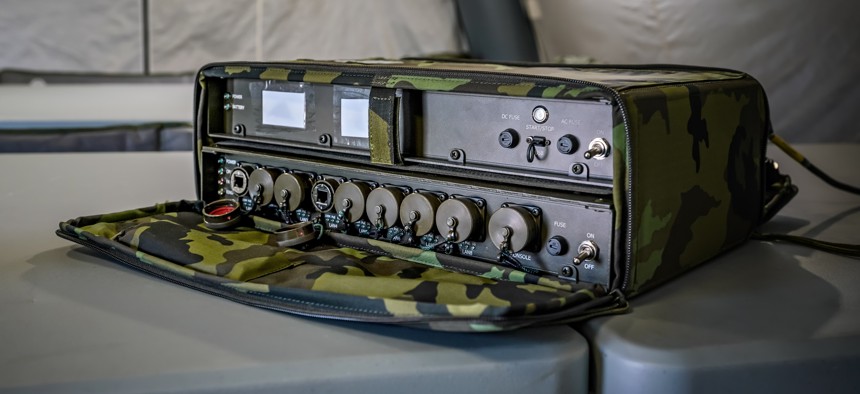Army updates Common Hardware Systems program to streamline purchases

This is an example of the ruggedized networking equipment available through the CHS-6 contract. Gettyimages.com/Lubo Ivanko
The Army overhauled the four-decade old program with the goal of making it easier for buyers to purchase ruggedized commercial technology for use in the tactical space.
The Army’s Common Hardware Systems program dates back to 1981, when CHS 1 was first awarded and the personal computing age was in its infancy.
But even with the changes in technology over the decades, the core mission hasn’t changed.
“It was always intended to be a consolidated procurement vehicle for people across the Defense Department to buy common hardware and software solutions and integrated solutions in a single place,” said Matthew Maier, project manager for interoperability, integration, and services at the Army’s Program Executive Office for Command, Control, and Communications-Tactical.
PEO C3T oversees the Common Hardware Systems program, among other vehicles.
CHS is now in its sixth iteration and while it remains a vehicle for commercial technology, it is different from most other technology contracts across the Defense Department
“It’s primarily commercial technology that is optimized for use in the tactical space. Things that are ruggedized, or things that run on armor platforms or run on aviation devices,” Maier said.
The Army’s intent is to standardize the equipment itself and how people purchase it. All 13 of the Army’s PEOs use the vehicle, he said.
Standardized equipment fosters interoperability and lowers costs by gaining economies of scale, Maier said.
The CHS-6 catalogue features items ruggedized laptops and servers, satellite communications, software-defined radios, and integrated network systems. For the new CHS contract, the Army added the ability to purchase drones as well.
There are 19 categories of equipment in the contracts catalogue.
Leidos won the sole prime position on CHS-6 in August, besting long-time incumbent General Dynamics.
Besides the change in primes, CHS-6 comes with a higher ceiling at $7.9 billion and a longer term at 10 years. CHS 5 was valued at up to $3.9 billion over five years.
The longer term and higher ceiling allows the Army to leverage purchasing power across all of the Defense Department, said Mike Hartley, the product lead for CHS 6.
Other changes include adding features to make purchasing easier, such as the ability to use government purchasing cards.
“I would characterize most of the changes as ways to make the contract more flexible so it can address the specific needs of the customer and not be so much of a one-size fits all approach that we had in the past,” Hartley said.
A second major change is that the user of the contract can now purchase services at the task order level, Maier said.
“That will help [program managers] to get access to tech manuals or trainers or additional documentation that they need to support their acquisition milestones,” he said. “We want to be the one stop shop they need to support the whole acquisition process.”
One of the hallmarks of the Common Hardware Systems program is that products on the contract are not managed by an Army depot.
“That’s why we do a single-awardee. They are responsible for managing the warranty program and we offer it in three, five and eight-year durations,” Maier said.
Leidos has a 24-hour turnaround requirement. Maier said that once the company receives a broken laptop, it has 24-hours to get a replacement back in the mail.
Leidos is fulfilling that requirement by building out a a network of suppliers and manufacturers. The company has a distributed network of facilities and partner facilities to support CHS 6, Maier said.
Leidos also is responsible for the overall management of the contract to include engagement with manufacturers, establishing cost agreements with them, warehousing, shipping, testing and integration.
With the new CHS-6 in full swing, Hartley’s team has been visiting with users of the contract to understand their needs. This will drive more users to the contract as well as help the contract evolve over its 10-year run, Hartley said.
“We're trying to make standardized solutions across DOD that people can use and if there's enough quantity across different PMs or different services, we can get enterprise discounts on things,” Maier said. “And that ends up generating savings then for customers.”



